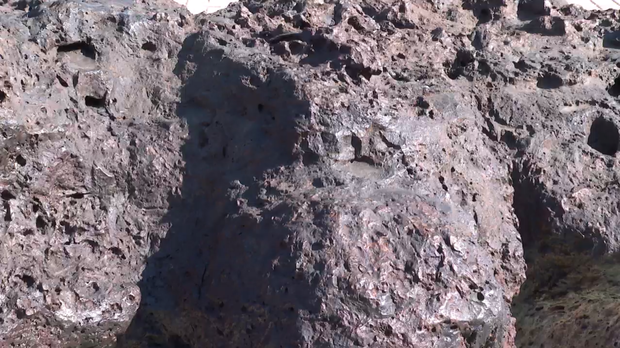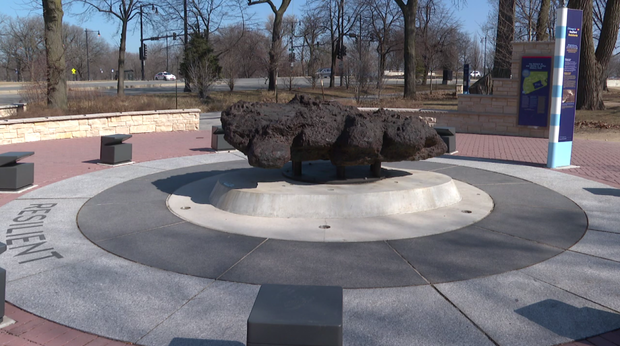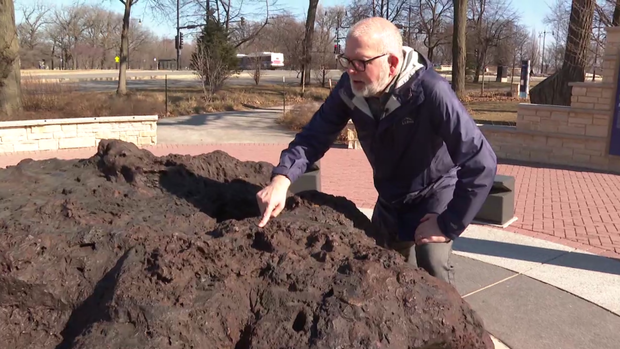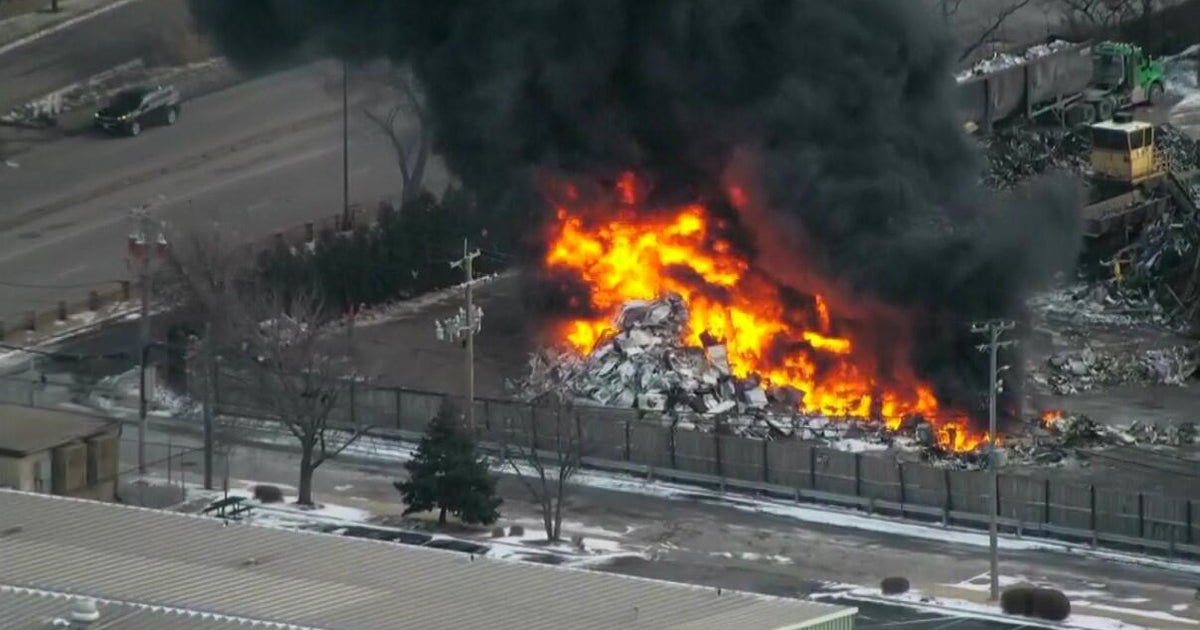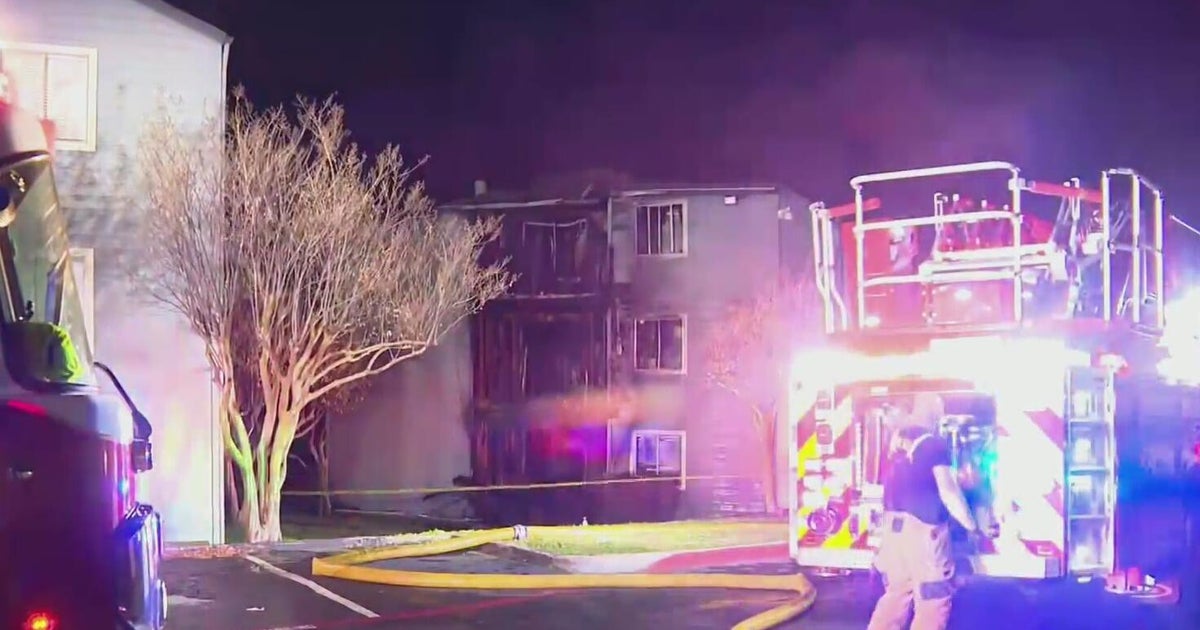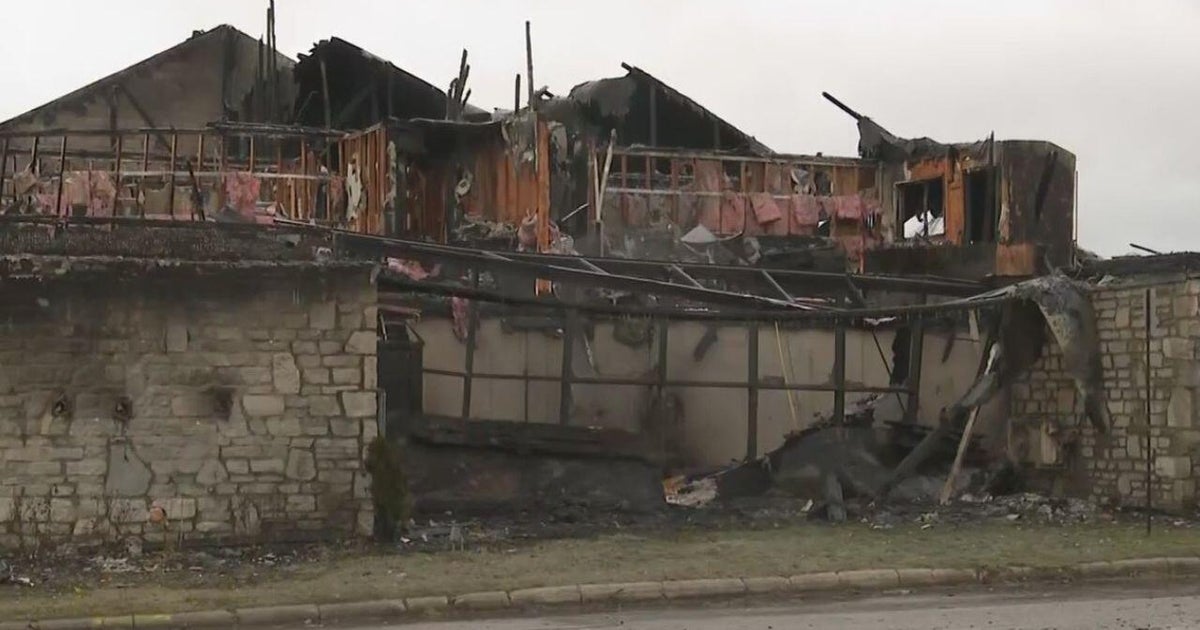Relic from Great Chicago Fire of 1871 keeps history alive and accessible
CHICAGO (CBS) -- On the night of Sunday, Oct. 8, 1871, a fire broke out in or near a barn on what we would now call Chicago's Near West Side.
Popular legend that generations of Chicagoans were taught in school alleges that a cow belonging to Mrs. Catherine O'Leary kicked over a lantern to start the fire – though a reporter for a now-defunct newspaper later admitted to making the story up.
Regardless, the flames spread amid dry conditions and strong winds – eventually jumping the South Branch of the Chicago River and consuming the present-day Loop, and then jumping the Main Branch of the River and destroying the Near North Side and even part of the Lincoln Park neighborhood. The flames did not stop until they reached Fullerton Avenue.
It of course became known as the Great Chicago Fire.
Firsthand accounts of the fire were colorful and horrific. This paragraph is from an account first published in 1925 by Frank J. Loesch - a bookkeeper for Western Union at the time of the Great Fire and later a prominent Chicago attorney – and republished in Chicago History Magazine for the centennial of the fire in 1971:
"I stopped for a few moments at the north corner of Randolph and LaSalle streets to look about me. All the buildings south on LaSalle as far as I could see, south of Washington Street, were ablaze. So were some north of it. My particular attention was, however, called to the Court House and City Hall. The former had for its center building a brown stone structure surmounted by a cupola in which was hung a large bell. The interior of the building was burning, and the flames being carried up through the open space had set the bell to ringing. Above all the sounds of the roaring fire, the wind, and the excited shouts of a moving mass of people, the bell whirled on its frame and over its staunchions, ringing out with a weirdness and a despairing clangorous volume, as though it were possessed of sense and were agonizing in its struggle against destruction. For many years thereafter the memory of its clangor often awoke me at night to recall the sense."
Every bit as fascinating as the firsthand accounts are items that date back from the fire – which are scarce and priceless 152 1/2 years later. One such item can be found outside the Chicago History Museum, at 1601 N. Clark St.
The 7,000-pound item might seem odd – and it is not really clear what it is at first glance. It is sometimes mistaken for a meteorite.
"It's not going to win a beauty contest for artifacts," said Peter Alter, chief historian for the Chicago History Museum.
So it's not the most attractive item – as things damaged or destroyed by fire usually aren't. But what exactly is that thing – prominently featured at the center of a circle where Clark Street meets LaSalle Drive as the latter turns east-west to meet DuSable Lake Shore Drive?
Bluntly speaking, it's a blob of metal. The fire was so intense that it melted hardware together in the basement of a store near State and Randolph streets. The blob was the result.
Recognizable items like the tip of a nail can still be spotted in the mass of metal.
And while it has been called a blob, Alter said the item's proper name is the fire relic.
There are a few reasons why the term "relic" is preferred.
"It respects those people who lost their lives in the Great Chicago Fire, who were made homeless, who lost their property and suffered – because, of course, we look at it as this major event in Chicago's history, but it was difficult, of course, to come back from that," Alter said. "So the idea of a relic allows us to respect our ancestors who experienced the fire."
In addition, the use of the term "relic" evokes something sacred – much as the term is used for an object of reverence associated with a saint or another venerated religious figure.
Alter described it as "the idea that like part of the True Cross; like part of the rib of a saint in a European cathedral, this is a relic that for some people, touching it, looking at it, thinking about it, takes you back 150-plus years."
The museum received the relic some years after the fire, upon being discovered by excavators.
"It was recovered in 1889 when some building was being done, and excavation, in the Loop at State and Randolph," Alter said. "It's from the basement of a hardware and cutlery store."
The relic is made up of nails, washers, and other hardware items that were melted and fused together as the flames raged.
"We know that the fire burned at about a thousand degrees Fahrenheit – which, of course, is very intense," Alter said, "intense enough to melt metal."
The Chicago Park District explained that the relic was discovered as laborers laid the foundation for the Masonic Temple Building – an early skyscraper completed in 1892. Its site was the present—day site of the Joffrey Tower.
Before the fire, the site had housed Hall & Kimbark's ironware house.
Quoted by the Park District, the Chicago Tribune reported at the time: "A gang of laborers have been engaged in the effort to break the hard black mass or remove it in some way, but without success. Two wagons have already been broken in the effort, and Norman T. Gassette, President of the company, says that anyone who wants the troublesome relic can have it—by taking it away at his own expense."
The Chicago History Museum – then called the Historical Society – did not take possession right away, according to the Park District. Candy manufacturer and local politician Charles F. Gunther (1837-1920) – whose own candy store had been destroyed in the Great Fire – took the relic to add to an array of fire artifacts he already owned, according to the Park District.
The museum took possession of the relic – along with several other pieces of Gunther's collection – after Gunther died, according to the Park District.
At one point, the relic was located right near a museum entrance. But back in the 1980s, it was moved to some bushes in the east plaza.
"Very people knew about it," Alter said.
Crews excavated the relic from the bushes in 2021 – with the intention of moving it to a more prominent site.
Now, the relic has its own plaza at the start of the Richard M. and Shirley H. Jaffee History Trail – where visitors can see it, touch it, and think about the city that rebuilt so brilliantly after the devastating fire.
"For some folks, it speaks to the city's fortitude, the city's resilience," said Alter.
He said city boosters in the decades afterward emphasized how the city "rose like a phoenix out of the ashes."
Chicago's resiliency is evident, Alter explained – because in 1893, barely 20 years later, the city hosted the World's Columbian Exposition.
Alter explained what he hopes people experience and take away from seeing the fire relic.
"I would like people, when they see it, to think of themselves as historians, so they can look at it, they can see washers and nails, they can interpret layers of history, and they can think about artifacts in their own lives – what represents their lives today," he said.




